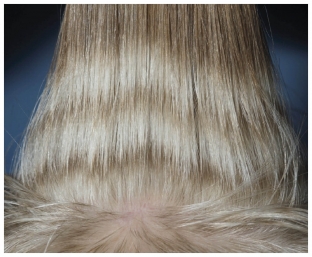Hair depigmentation, more commonly known by the trivial name of graying, is a pathological or physiological change in the natural hair color to silvery white. The mechanism of development of hair depigmentation is associated with the disappearance of the color pigment in their structure and its replacement with air bubbles. As a result, the hair not only loses its natural color, but also becomes much lighter and looks more sparse. There are several types of hair depigmentation, which are the result of some causes that provoke graying. Find out the types and causes of hair depigmentation at estet-portal.com.
What are the main types of hair depigmentation?
Hair depigmentation can develop at absolutely any age. According to the period of its occurrence in a person's life, hair depigmentation is divided into several types.
Types of hair depigmentation:
- Age graying. This type of depigmentation is also called physiological, since it occurs in all people with the onset of old age.
- Premature graying. This type of depigmentation according to the mechanism of development is no different from the previous one. Its main feature is that premature graying occurs with the onset of middle age, not old age. Most often, this type of depigmentation is more prone to men than women.
- Congenital hair depigmentation that occurs immediately after birth or during the first few years of life. Very often this type of graying is combined with severe genetic diseases.
Causes of hair depigmentation
As already mentioned, the direct cause of hair depigmentation is the replacement of melanin in the hair structure with air bubbles, due to which the latter acquire a silvery hue.
If we talk about age-related depigmentation of hair, then the reason for the implementation The described mechanism is a general metabolic disorder, which is certainly present in older people.
Frequent psychological stress, poor diet, limited motor mode and chronic diseases can accelerate this condition, and, accordingly, cause premature graying.
Congenital graying is caused by Progeria – a severe hereditary disease caused by a violation of the genetic code, according to estet-portal.com. In this condition, accelerated aging of all systems and organs is noted, one of the manifestations of which is premature graying.

Methods for the elimination and treatment of hair depigmentation
A gray hair treatment plan is developed based on the type of hair depigmentation. For example, if we are talking about age-related graying, which is considered a physiological process, any methods of dealing with it are actually useless. The whole world in relation to the correction of this condition has taken the position of recommending artificial hair coloring. Undoubtedly, this technique allows you to completely eliminate the symptoms of depigmentation for a while, but it does not solve two fundamental problems. Firstly, when dyeing, it is not possible to get rid of hair depigmentation forever, since constant color correction is needed. And, secondly, dyeing returns only the color of the hair, while the density and weight of the latter may still not satisfy the person.
The above technique is also used to treat premature graying, but it is not always satisfactory for the patient. You can prevent the imminent onset of graying by observing the following principles of life:
- healthy eating;
- abstaining from drinking alcohol;
- smoking cessation;
- avoidance of stress and maximum psychological balance;
- active sports.
These principles will help to avoid graying at an early age.
During progeria, it is meaningless to talk about the treatment of graying, as well as the disease itself, since it is a severe genetic pathology for which no effective therapy has yet been developed.
In order to restore the normal structure and eliminate hair depigmentation in this disease, wearing a regular wig is often practiced. Perhaps the future belongs to hair transplant surgery, but today this procedure is very expensive and not available to all patients who need it.







Add a comment